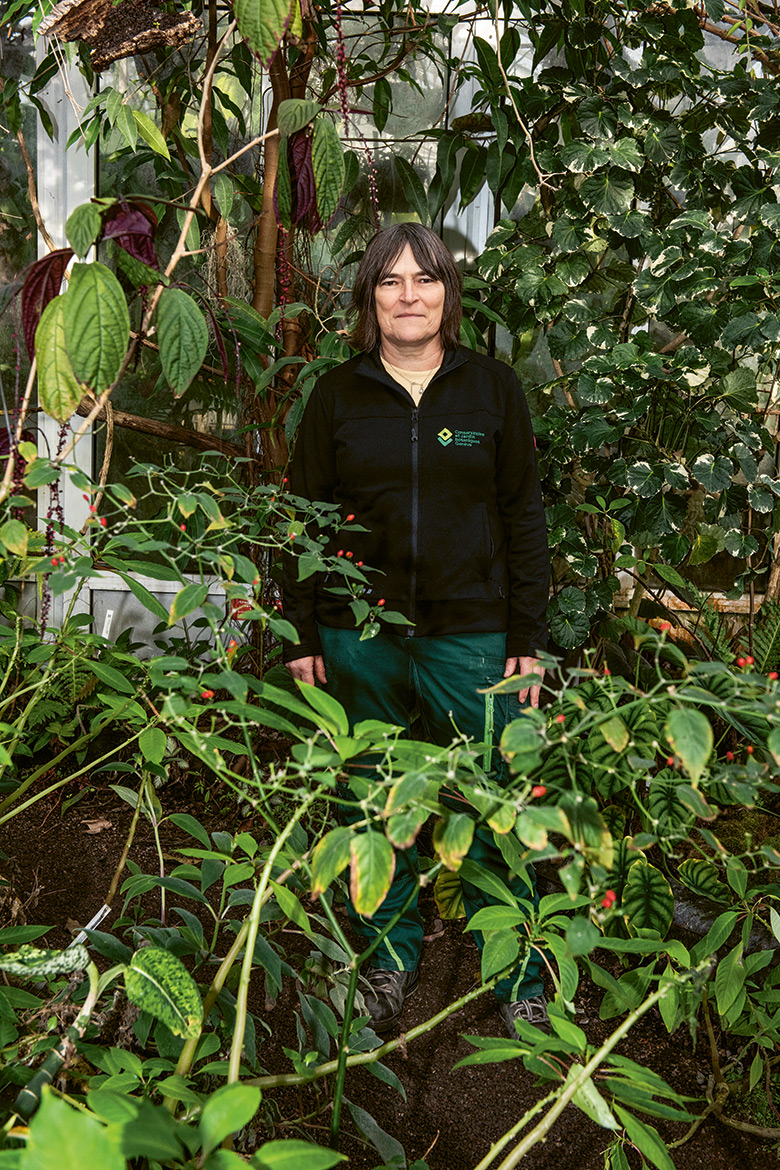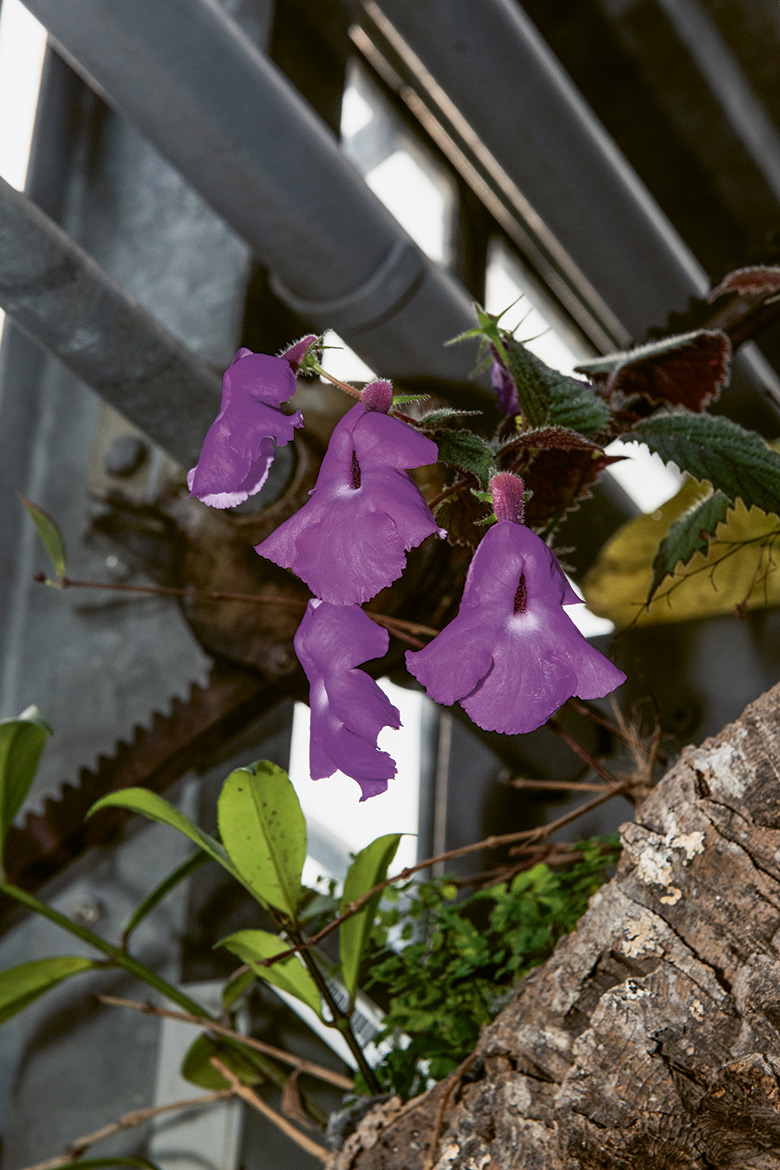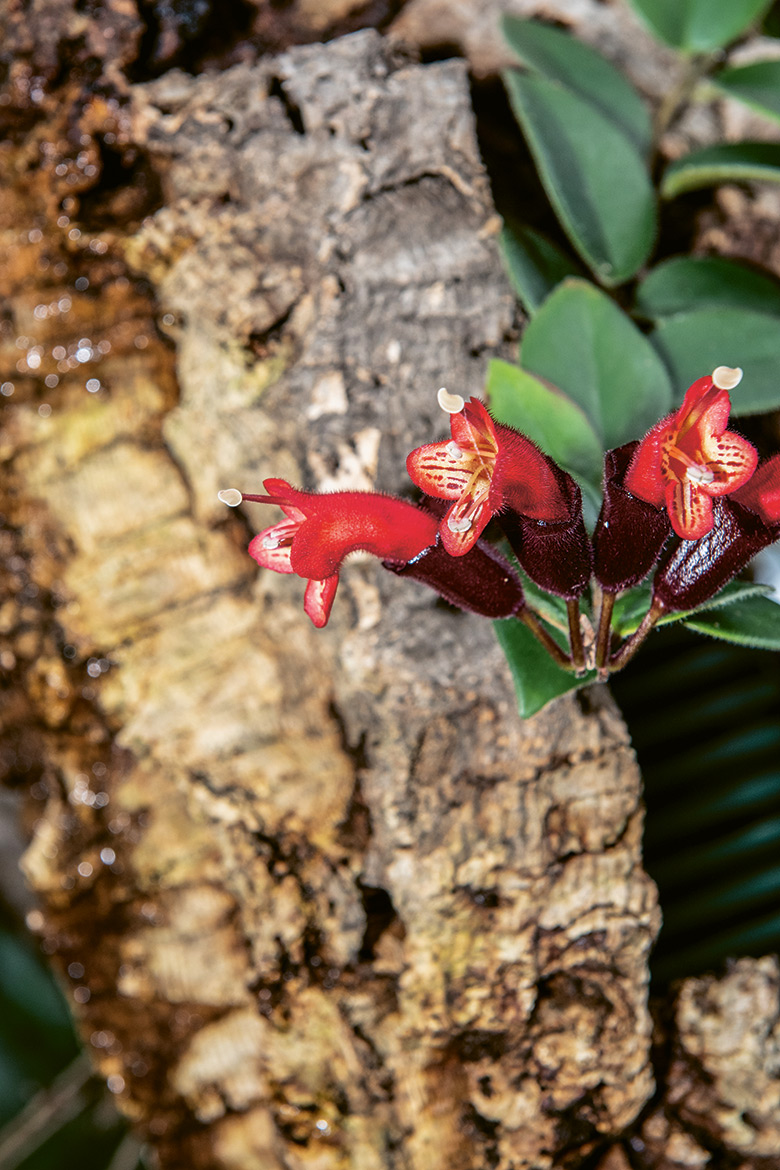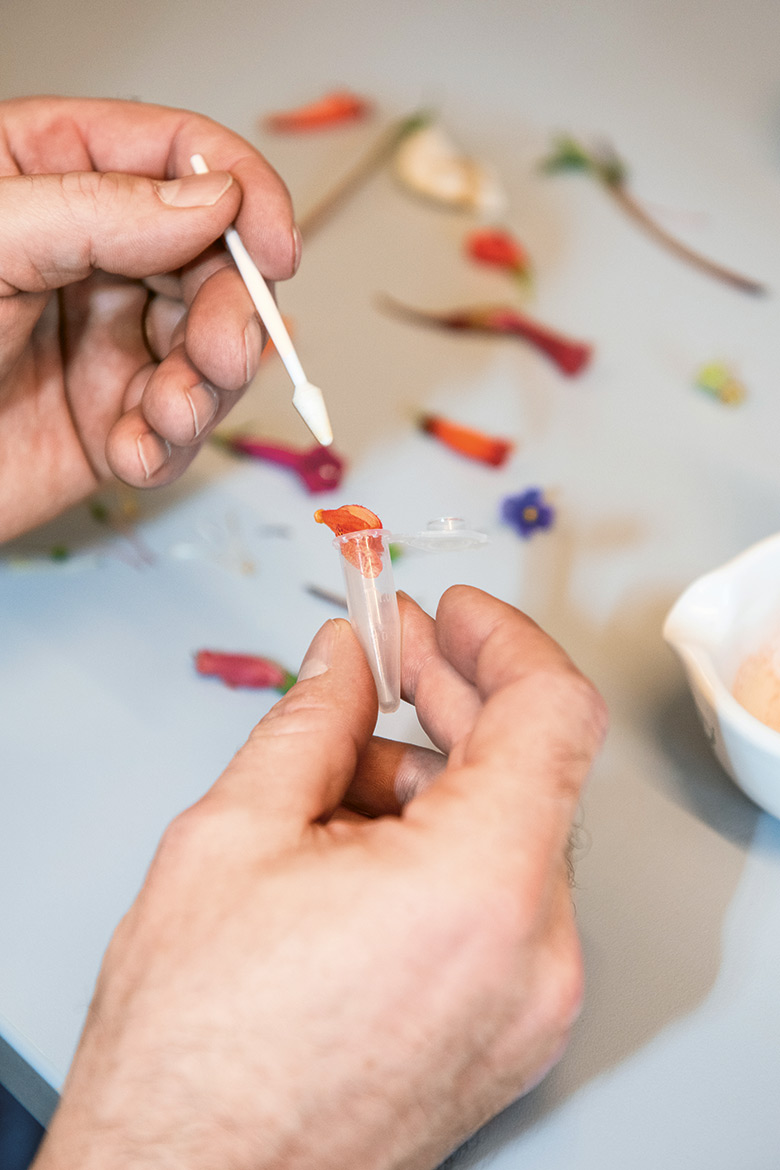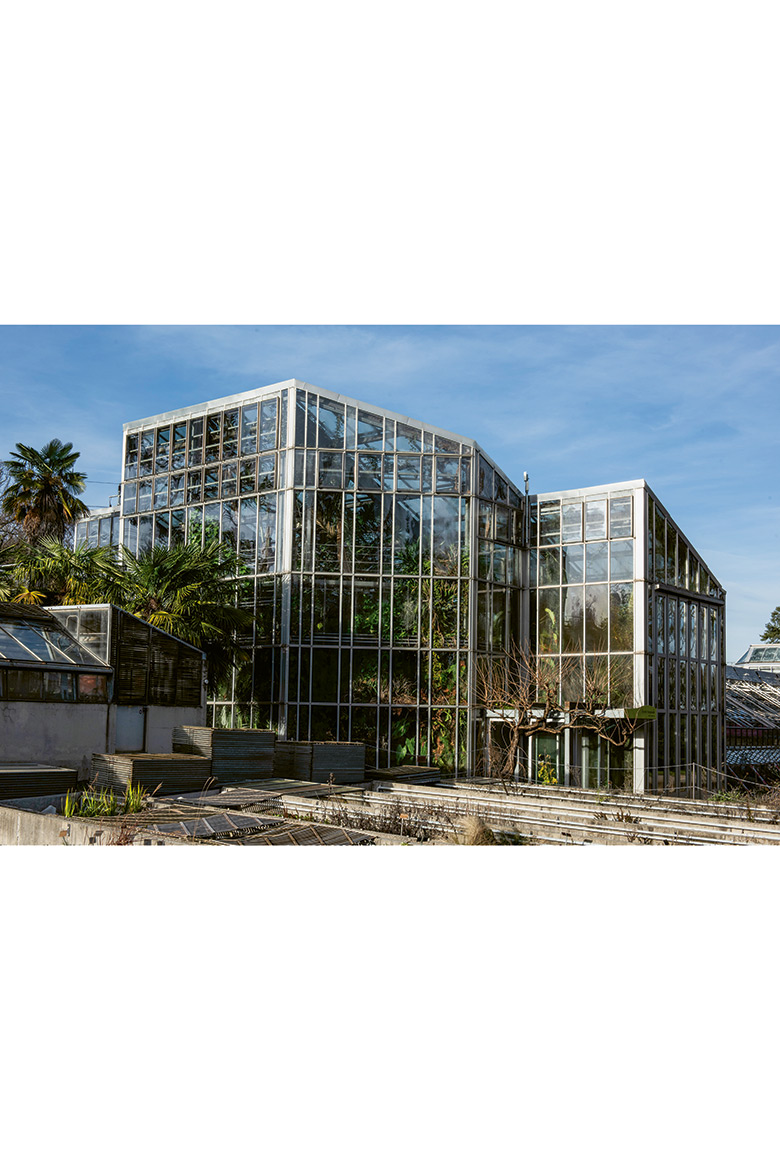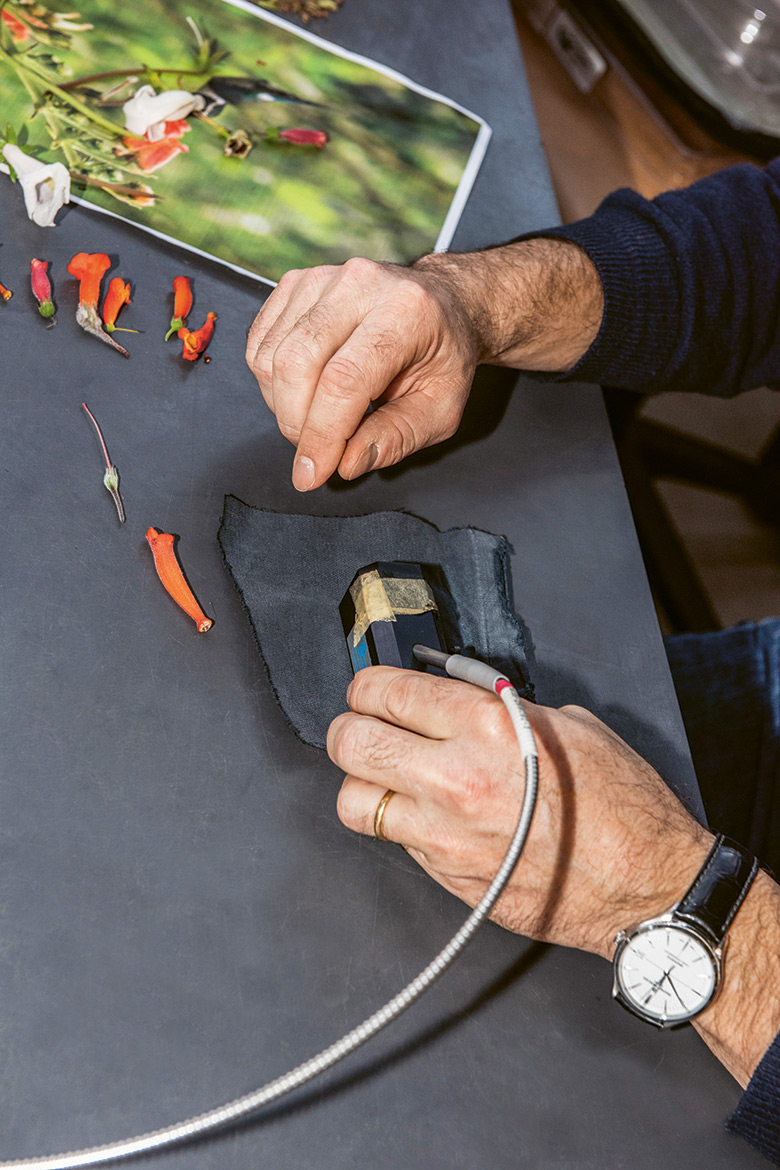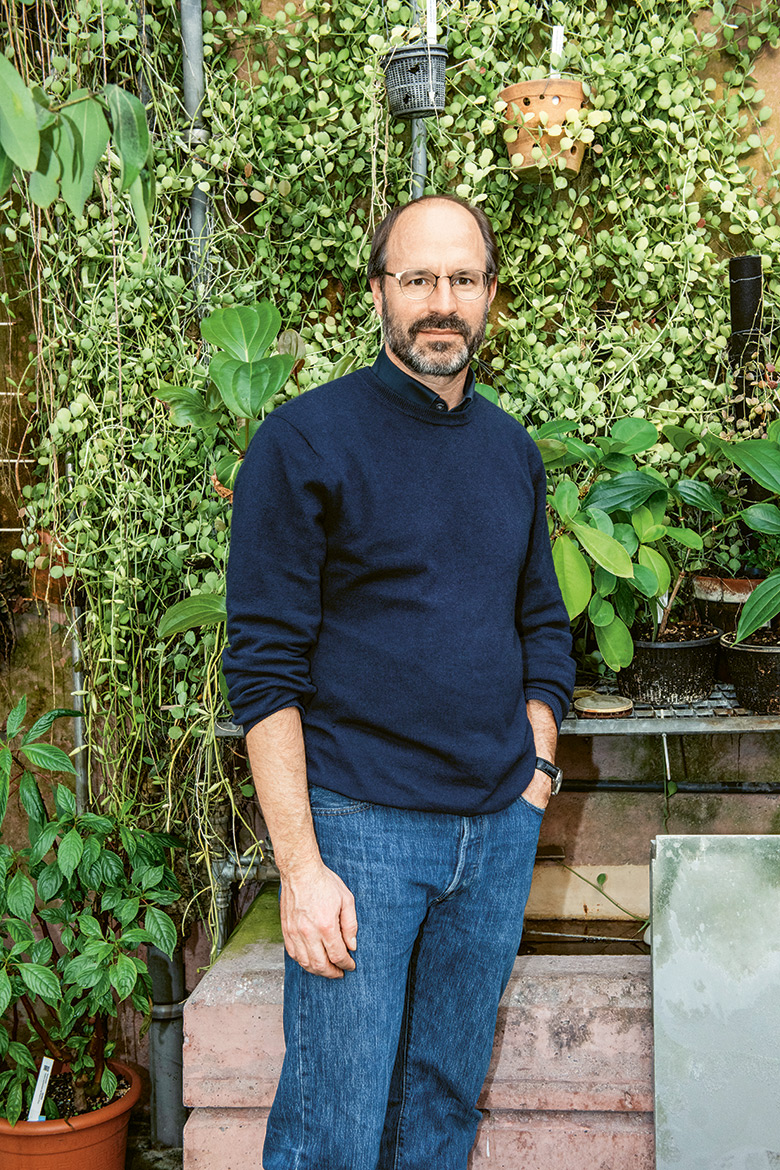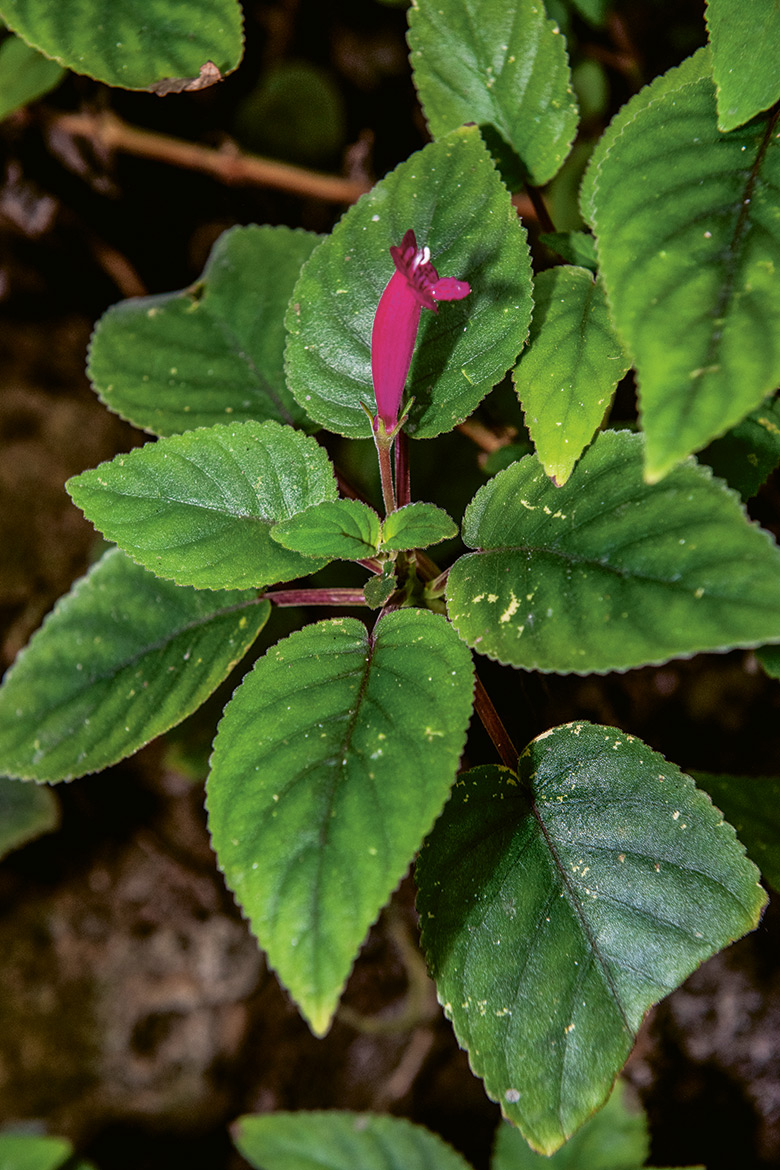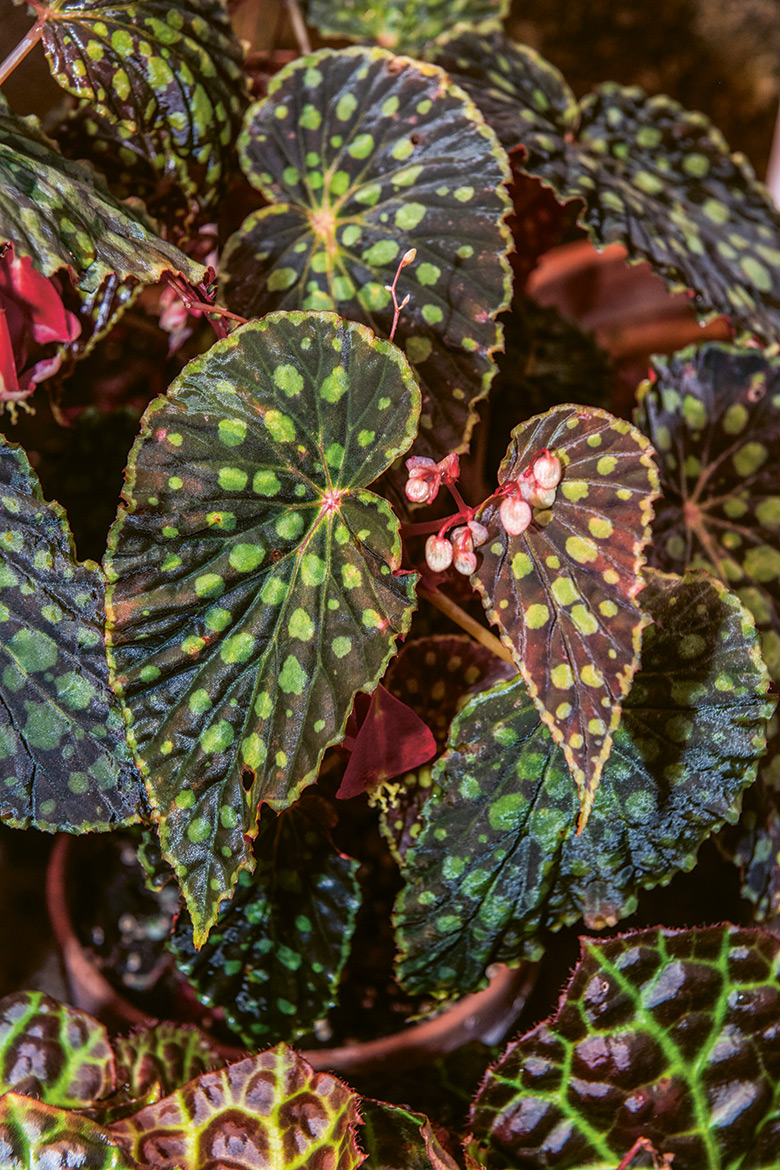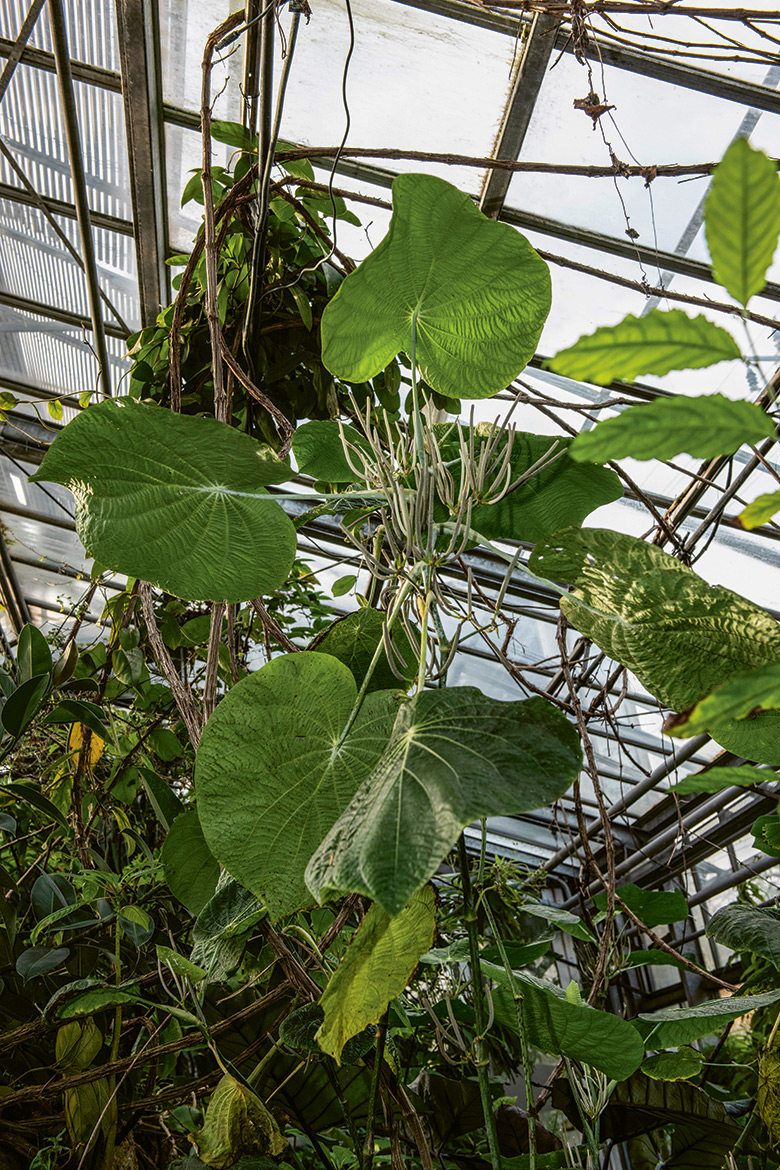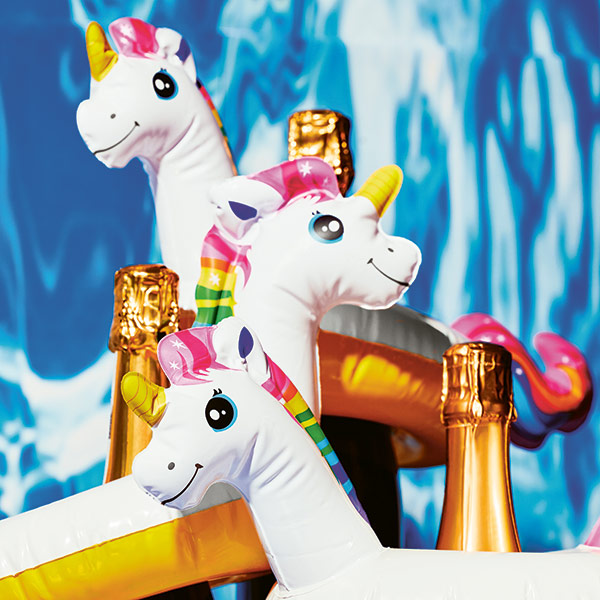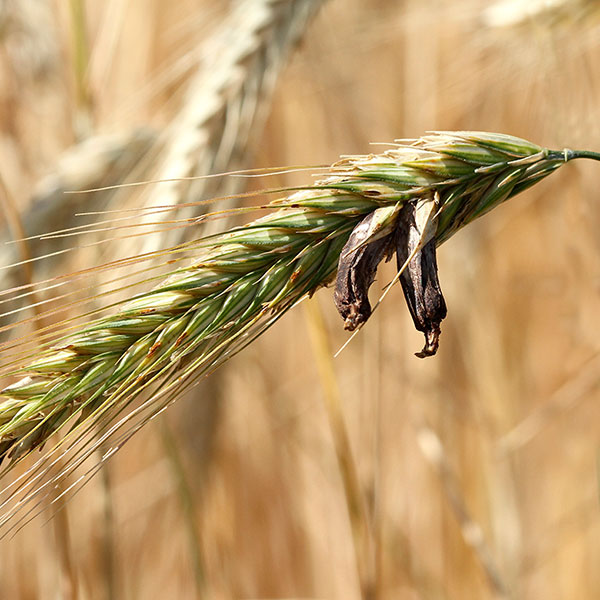REPORT
The glory of the garden
Researchers at the botanical gardens in Geneva are trying to determine why flowers and pollinators enjoy such precise chemistry between them. Their answers can also explain the impressive variety of colours and shapes within just a small group of plants.

Red and alluring: the blossoms of the Asian tropical plant Aeschynanthus radicans are waiting to be pollinated by songbirds. | Image: Hervé Annen
Mathieu Perret’s glasses steam up as he pushes open the door to the palm house. He’s a botanist at the Geneva Botanical Garden, and we’ve just entered one of its greenhouses. It’s barely bigger than your average living room, but it houses a tiny replica of the Atlantic rainforest in Brazil, one of the most species-rich habitats on earth. It’s humid and 20 degrees Celsius in here. Shoulder-high shrubs grow on blocks of tuff rock, while red blossoms ooze downwards from small, delicate plants growing in pieces of bark suspended from above. However different these plants might look on the surface, they actually all belong to one and the same family: the gesneriads.
There are 3,000 different species of them, and they are found all over the tropical zones of the world, from Australia to America. They became famous as ornamental plants and can still be seen in the front rooms of many homes today. Their flowers are immensely varied in both shape and colour, which has also made them popular objects of research. “We want to find out how evolution brings about something like this”, says Perret.
The eye of the hummingbird
Perret stops in front of a magnificent bush whose flowers look like slightly bent tubes. “These are perfectly adapted to the beak of a hummingbird”, he says. The pollen-bearing stamens sit on long stalks and protrude half a centimetre out of the flowers. When a hovering hummingbird inserts its beak into the flower, its forehead at some point naturally touches the stamens and becomes covered in powdery pollen. When it flies on and inserts its beak in a flower on the next bush, it transfers the pollen to the carpel, which is similarly directed exactly at the forehead of the hummingbird. “This highly specialised flower shape means that pollination functions as reliably as possible”, says Perret.
He picks one of the flowers and breaks it in two. A drop of thick nectar bulges out. “This is the birds’ reward. It’s what keeps them coming back”. All that’s needed is a signpost to show the hummingbirds the way: and that signpost is colour. “The shining red colour of the flower corresponds exactly to the wavelength of light that hummingbirds can see well”.
Perret has established the flower colour of more than 150 gesneriads and compared how well they can be perceived by the eyes of both hummingbirds and other pollinators, such as wild bees. In most cases, he found that the two spectra fit together like pieces of a jigsaw puzzle. Hummingbird flowers reflect light mostly in the range around 600 nanometres (red), while flowers pollinated by bees are more in the range around 400 nanometres (blue). This colour code enables the plants to ensure that only the right pollinators find their way to their flowers.
Burnt plastic for bats
The next shrub we see has developed a different means of communication. Its flowers are greenish, funnel-shaped, and smell like burnt plastic. But their nectar tastes pleasantly sweet and fruity. “This flower has adapted itself to the needs of bats”, explains Perret. At night, these animals see almost nothing, so there is no point in the plant investing in any elaborate colours for its flowers. Instead, it communicates using scent. Its stamens sit on short stalks inside the calyx, which is ideal for dusting the snouts of its nocturnal visitors with pollen.
“Just a few years ago, researchers would have regarded these two shrubs as mere distant relatives, because their flowers look completely different”, says Perret. “But thanks to our genetic analyses, we now know that it’s not true, and that they are in fact very closely related”. He has reorganised the entire gesneriad family tree according to these genetic relationships. This has enabled him to reconstruct the evolutionary history of their flower shapes and to measure the speed at which these plants have made changes to their design.
His data suggest that all of these plants were originally pollinated by insects such as wild bees and certain moths. But then something suddenly changed. About 20 million years ago, the first hummingbirds appeared in South America. “This opened up a new opportunity for plants here, and many species adapted to these new pollinators”. From an evolutionary point of view, there must have been a veritable ‘run’ on hummingbirds, because in the millions of years thereafter, the flowers that they were pollinating evolved independently, undergoing at least 30 diversification shifts. This ultimately led to more than 350 gesneriads that are exclusively pollinated by these birds.
But what has astonished Perret is the fact that these changes were reversible. “Some plants switched back from birds to insects as their pollinators. It is possible that this occurred in regions where hummingbirds had died out for a certain period of time”. Bats arrived less than 10 million years ago, which triggered another wave of adaptation. Eight different variants of this plant independently developed scent as a signpost for pollinators. “This development occurred relatively recently, which is why these eight species have not yet been joined by others”.
Temperature management in times of climate change
Collections of living plants like these are of immense scientific value. “We could never have carried out this study with specimens of pressed plants”, says Perret. “That’s due to the colours of the flowers fading when they are dried. Everything then looks brown”.
The Geneva Botanical Garden is currently home to more than 160 species. “We are adding a few more plants every year. Some of them are newly discovered species that have not even been catalogued yet”, he says. To this end, Perret is collaborating with researchers in South America, and sometimes travels through the jungle himself – usually in either Brazil, Colombia, Ecuador or Panama.
But it’s expensive to maintain a living collection like this. In the outer room of the mini-jungle in Geneva, hundreds of flower pots are stacked on metal racks. Plant substrates such as peat moss, pumice gravel and leaf mould stand packed in sacks and tubs. This is where Yvonne Menneret works. She has a pair of pruning shears tucked casually into her green gardening trousers. “The pots mustn’t get waterlogged. But if they’re too dry, that isn’t good either”, she explains. She is responsible for running several greenhouses, just for the gesneriads. In some of them, they’ve reduced the temperature down to 15 degrees. “The plants are in their winter dormancy”, she says. But maintaining the right temperature is tricky in times of climate change. “In a hot summer like the one we had in 2022, many plants are going to die. They can’t cope well with 30 to 35 degrees Celsius”.
But it’s the many pests like aphids, whiteflies and threadworms that pose the biggest problem. “Our botanical garden is certified organic. That means we have to combat the pests using beneficial insects such as ladybirds, predatory bugs and fungi”, says Menneret. She releases thousands of them every week in the greenhouses.
Back in the lab, Perret is standing in front of a display of freshly picked flowers. He uses a mortar and pestle to grind them down one at a time, applying a little methyl alcohol to extract their colour pigments. He employs chromatography to separate their chemical building blocks, then analyses them in a mass spectrometer. To date, Perret and his postdoc Ezgi Ogutcen have discovered seven basic types of colour molecule in the flowers. They all belong to the anthocyanins that are widespread in plants.
“Gesneriads make their pigments along a precisely defined production chain – like in a factory – with the process controlled by just a few genes”, says Perret. Herein lies the key to the rapid evolution of the flowers’ colour: “A tiny change in the genes leads to the production of a different colour, enabling the flower to adapt to different pollinator species”.
Caught in an evolutionary trap
But something surprised him: two out of the seven colour molecules belong to the rare compounds known as deoxyanthocyanins. These have two special features. First, plants can only produce red flowers with them. Secondly, plants that have switched to producing these two molecules can no longer revert to using the more conventional anthocyanins. “This means that these plants are stuck in an evolutionary trap”, says Perret. They can thereafter converse only with hummingbirds, which remain their only pollinators.
Thirty percent of all the gesneriads that Perret has analysed have fallen into this same trap. But he still doesn’t know why it happens. “Either way, it’s fascinating to observe how genetic and chemical changes can influence the fate of a plant group”, he says. “It’s only thanks to our study that we can now understand the evolutionary mechanisms that have resulted in the astonishing plant diversity in the tropics and elsewhere”.

